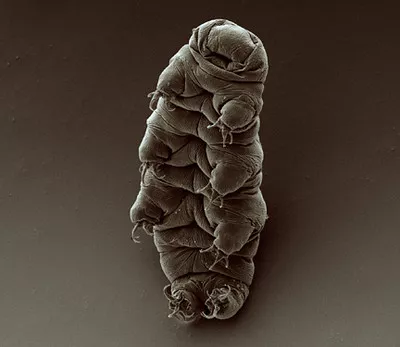According to slashgear, the international space station is not just the home of humans from different countries around the world Since 2021, it has also been home to a group of very small space explorers: known as water bears or slow walkers These tiny eight legged animals have tenacious vitality; They can survive in extreme environments, such as very hot or cold conditions and no water for a long time. They can withstand radiation and even survive in the vacuum of space.

The bears were sent into space as part of cell science-04, an experiment at NASA's Ames Research Center. The purpose is to study the impact of the microgravity environment of the space station on the water bear. In particular, the researchers wanted to know what would happen to the water bear's genes and whether they would change in generations when the water bear lived on the space station.
Slow walking animals are ideal for this study because they can adapt well to extreme environmental conditions. This makes them well suited for studying their potential adaptability to environmental stress, which may also be useful for understanding the long-term impact of space flight on humans. "We want to see what 'skills' they use to survive when they reach space and what skills their offspring use over time," explained Thomas Boothby of the University of Wyoming, the lead researcher of the experiment. "Are they the same or cross generational changes? We just don't know what will happen."
These Slow Walkers seem to have used a whole set of methods to survive harsh conditions, such as using pigments to convert strong ultraviolet rays into harmless blue light. As for survival in space radiation, the researchers believe that this may be achieved by producing a large number of antioxidants, which can protect them from physical changes. NASA and other space agencies are particularly interested in this because radiation is a major problem for astronauts - researchers know how to alleviate it, but they haven't completely solved it.
Astronauts working for NASA have a maximum lifetime threshold for the amount of radiation they can be exposed to, because excessive exposure to radiation can lead to health problems, such as an increased risk of cancer. By studying Slow Walkers, the researchers hope they can unravel information about how their genes are turned on or off to help protect them from radiation.
"We've seen them do this in response to radiation on earth," Boothby said. "We think the way Slow Walkers evolved to withstand the extreme environment on the planet may also be the reason to protect them from the pressure of space flight." On June 3, 2021, during SpaceX's 22nd commercial supply service mission, the water bears were brought to the space station. They are now living in their new home, a special hardware called biological culture system. By studying these small creatures for a long time, researchers may develop safer long-term space missions for mankind in the future.